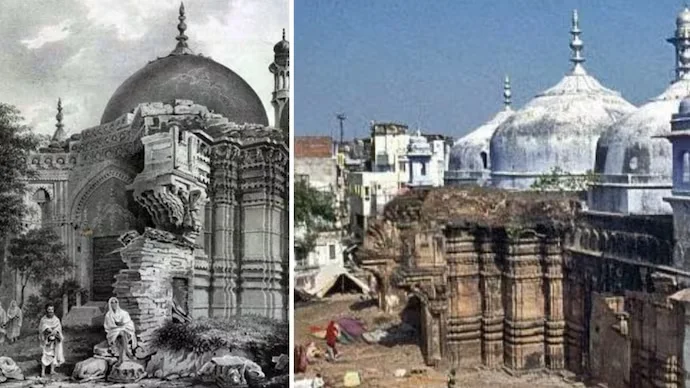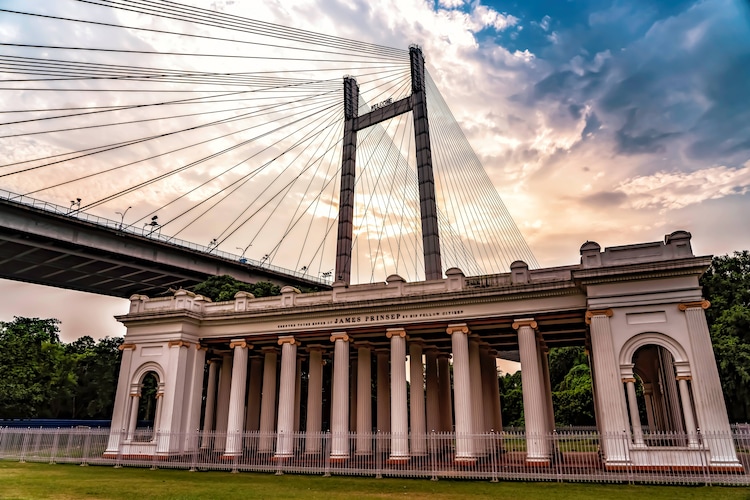What James Prinsep and his 200-year-old map reveal about Gyanvapi
James Prinsep, because of whom the world knows of emperor Ashoka, lived in Varanasi for 10 years. In 1831, the British scholar drew a lithographic map of the old Kashi Vishwanath temple, and showed how Aurangzeb's Gyanvapi mosque stood on it. That will now be a crucial piece of evidence.

At a walking distance from Kolkata’s Eden Gardens is the Prinsep Ghat on the banks of the Hooghly. One gets a close view of the Vidyasagar Setu and can take a boat ride on the River Hooghly from Prinsep Ghat.
The ghat is named after James Prinsep, a British numismatist and archaeologist, who made significant contributions to India’s historiography. He came to India when he was 28 and was the youngest fellow of the British Asiatic Society.
It was Prinsep who deciphered the Brahmi script and helped the world know about emperor Ashoka’s reign. It was he who established that king Devanampriya Piyadasi, who is mentioned in several inscriptions from Sri Lanka to Afghanistan, was none other than emperor Ashoka.
The ghat in Kolkata was named after Prinsep as a way to recognize his contributions after he passed away in London in 1840 at the young age of 41.
Table of Contents
JAMES PRINSEP AND HIS ‘BENARES ILLUSTRATED’
James Prinsep first served in Calcutta (now Kolkata) and then in Benaras (now Varanasi) for 10 years. Prinsep’s stay in Varanasi (from 1820 to 1830) is what is of interest and importance against the backdrop of what is unfolding now.
Prinsep built Varanasi’s underground sewage system, which is still operational, restored the Alamgir Mosque, built by Mughal emperor Aurangzeb in 1669, and drew the city’s maps. He also brought out a book ‘Benares Illustrated, A Series of Drawings’ in 1831.
That book and the map will be used as part of evidence by the Hindu side in the legal battle for the Gyanvapi complex.
In ‘Benares Illustrated’, James Prinsep used lithography to engrave every scene on paper and present information with evidence. Chapters and illustrations include Munikurnika Ghat, Bruhma Ghat, Procession of the Tazeeas, and Hindoo Nach Girls.
Most importantly, James Prinsep, in ‘Benares Illustrated’, discussed the architecture of the old Vishweshwar temple, and how the original place of worship was converted to the present Gyanvapi mosque. Vishweshwar or Lord of the Universe is another name for Lord Shiva.
PRINSEP TALKS ABOUT AURANGZEB’S BIGOTRY
In ‘Benares Illustrated’, Prinsep details how Aurangzeb’s men used the material from the destroyed Kashi Vishweshwar temple to build the Gyanvapi mosque.
“The bigotry of Aurungzeb did not allow many vestiges of this more ancient style to remain. In 1660, for some trifling resistance to the imposition of a capitation tax, he took occasion to demolish the principal Shiwalas and constructed Musjids or mosques with the same materials and upon the same foundations, leaving portions of the ancient walls exposed here and there, as evidence of the indignity to which the Hindu religion had been subjected,” Princep writes.
The Kashi Vishweshwar temple is of immense significance in Hinduism as it is one of the 12 Jyotirlingas or temples where Lord Shiva is said to have appeared as a column of light. Lord Shiva is said to have created a water-producing spot there hence the name Gyanvapi (well of knowledge).
The Adi Vishveshwara Temple was destroyed by Qutb ud-Din Aibak, the general of Muhammad Ghori, in 1194 but was rebuilt. It was Aurangzeb who razed the Kashi Vishweshwar temple again in 1669 and built the Gyanvapi mosque using the same foundations and materials.
It is very similar to the use of materials from the destroyed 12th-century temple that was used to build the Babri Masjid in Ayodhya. The Babri Masjid was constructed in 1528 by Babur’s commander, Mir Baqi.
Babur was the first Mughal ruler in India, while Aurangzeb was the last of that family to hold sway.
PRINSEP’S 200-YEAR-OLD MAP OF GYANVAPI TEMPLE






